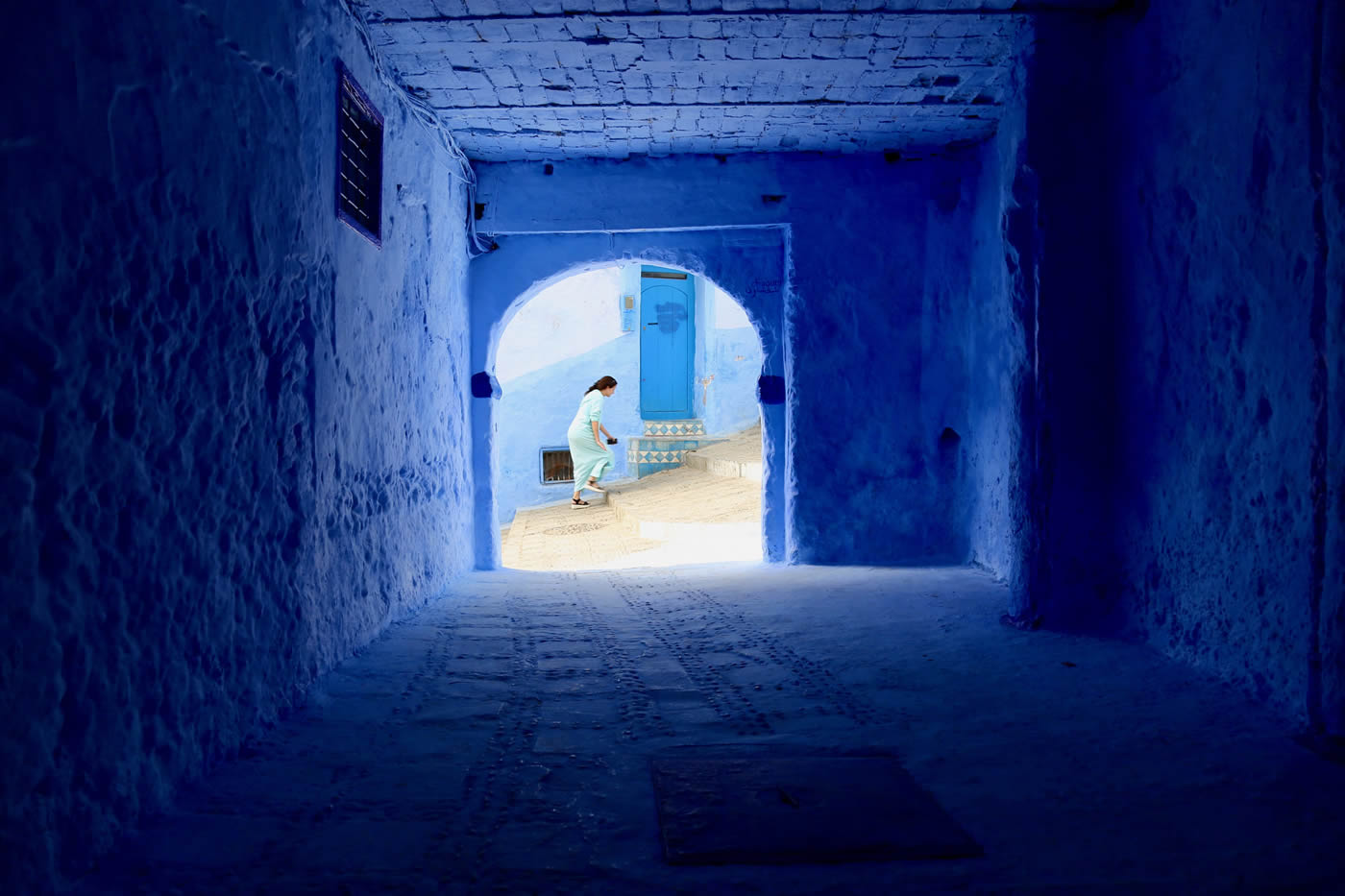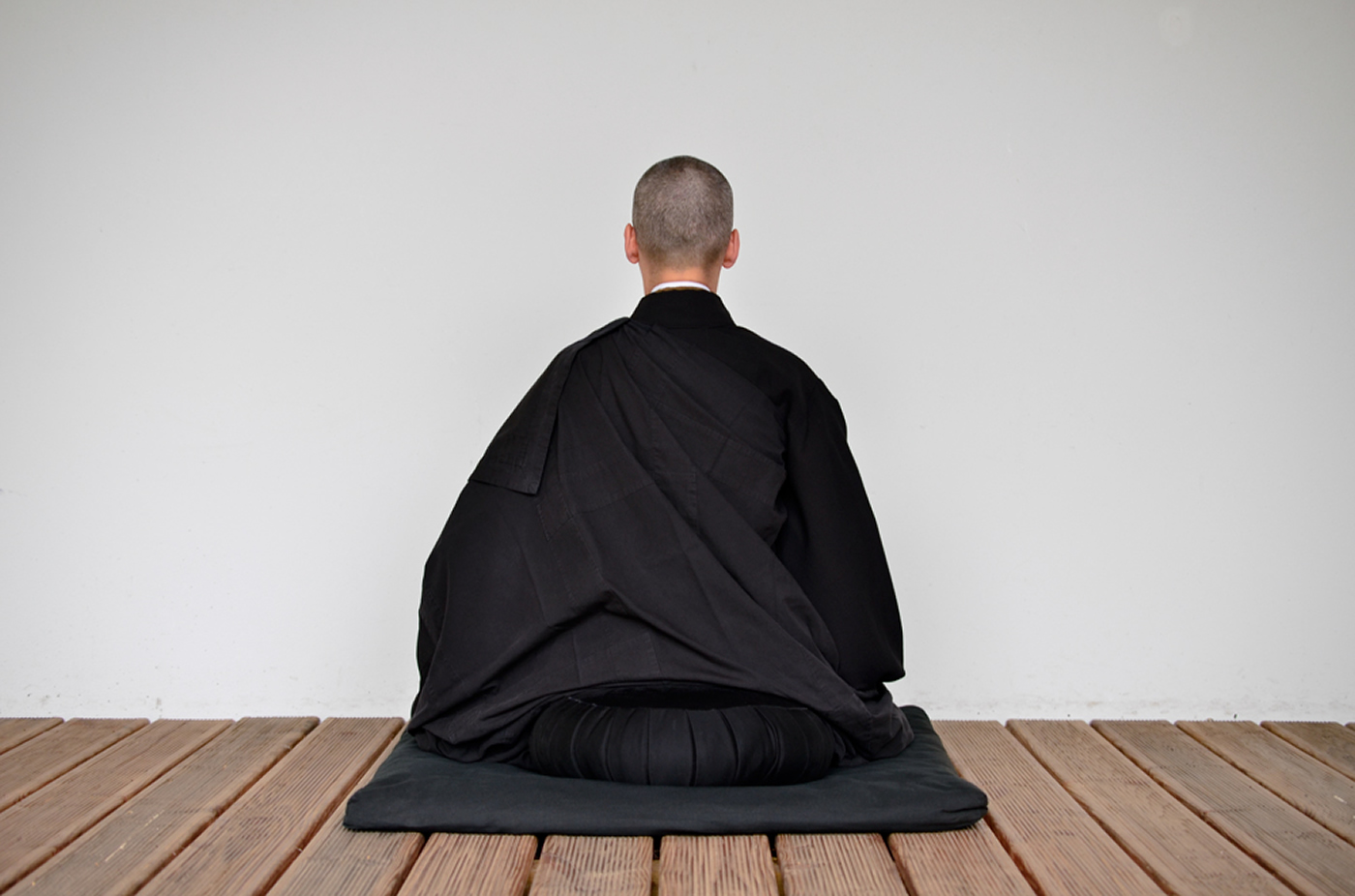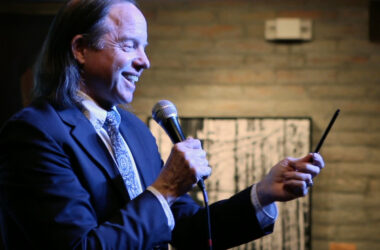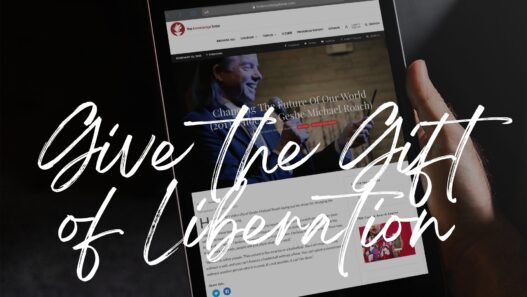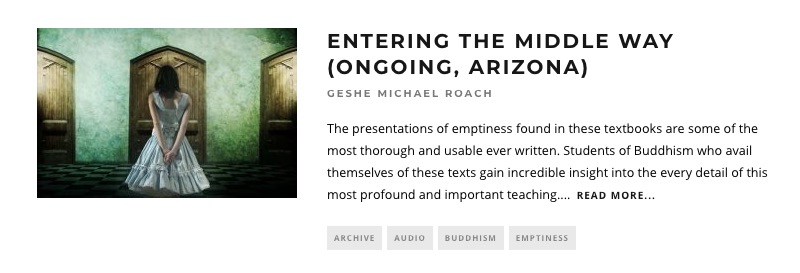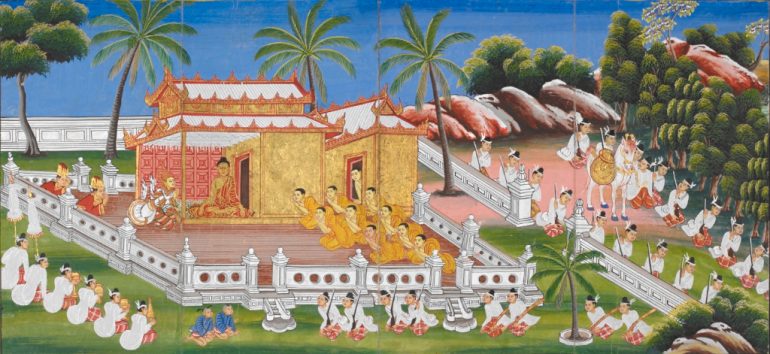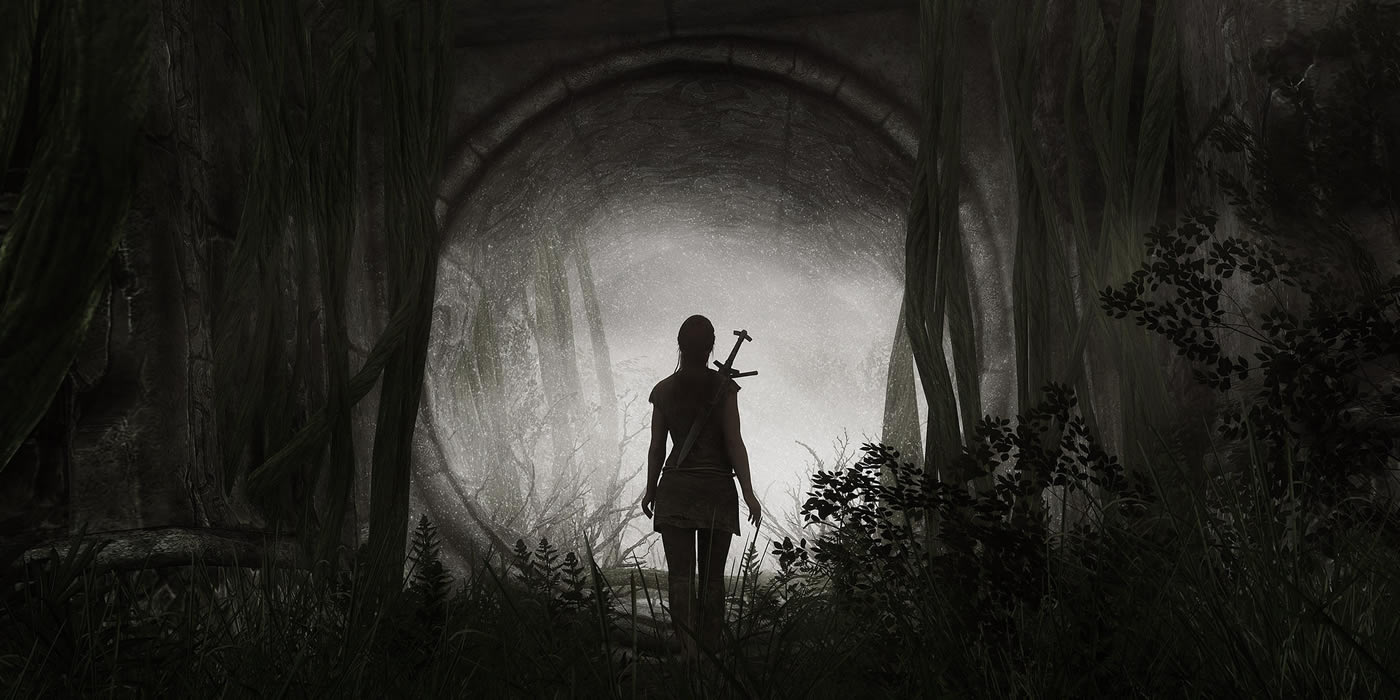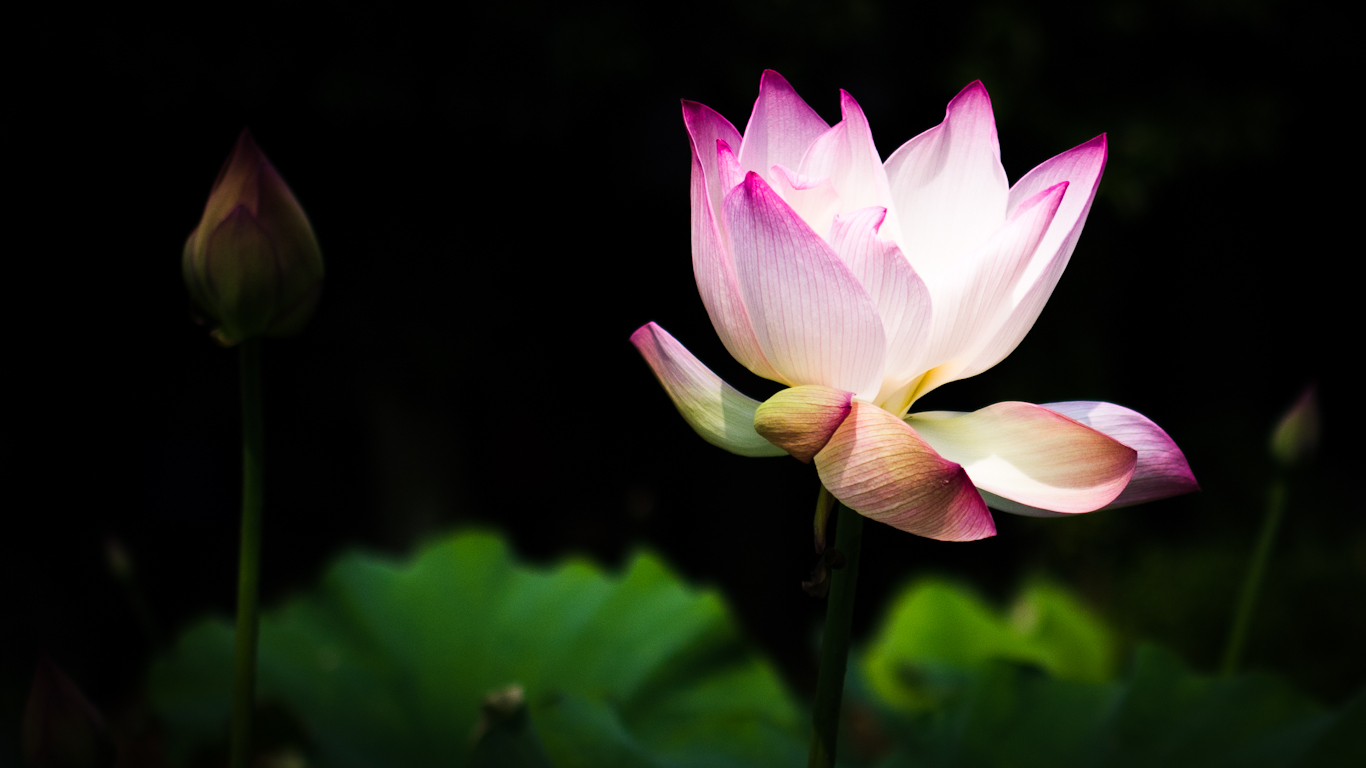Around 1000 AD, 1500 years after the time of the Buddha, the Tibetans undertook a monumental task: to translate thousands of pages of Buddhist literature from Sanskrit into Tibetan. It took them 700 years to complete translations of the kangyur (the word of the Buddha) and the tengyur (the Indian commentaries).
Now, as Buddhism has been making a big push westward, Geshe Michael’s aim is to complete an even larger task: to translate hundreds of thousands of pages of Buddhist literature into modern languages. Since the blossoming of Buddhism in Tibet, no less than 200,000 pages of brilliant commentary have been composed by masters and scholars in the Tibetan language.
In this ongoing series of courses, Geshe Michael’s goal is to create and guide a team of young translators to translate these great classics. First stage is to translate these great classics into English and from there they can be easily translated into modern Chinese, Spanish, German, Russian and many other languages.
This class is by no means only for translators, it’s a rare opportunity to learn these subjects directly from Geshe Michael as he does a word-by-word commentary, and goes much deeper into the finer points of Buddhist philosophy and practice.
Geshe Michael has chosen a number of subjects for this new course series and translator training program. These subjects will include all of the major subjects of the traditional Geshe program, as well as going into other specialized topics which may not normally be included in the Geshe program.
This course series will be organized by the following topics: Upper Middle Way, Meditation on Emptiness, The Mind-Only School, Lower Middle Way, Logic, Higher Knowledge (Abhidharma), Vowed Morality, Developing the Good Heart (Lojong), and Comparative Philosophy.
Background on The Upper Middle Way
In a Gelug Tibetan monastic university, when a student debater enters the ninth class and begins their study of the higher half of the Middle-Way School, this marks a major change in status. At Sera Mey, it is at this point that the monk earns the right to vote upon questions affecting the monastery at large during the regular assemblies. He has also normally just finished his rikchung examinations, which in effect qualify him to become, in time, a geshe.
In Tibet it was a custom at this juncture for the entire surviving class to approach sponsors and raise the funds to make an important gift to the monastery in appreciation of her kindness. The gift might be a set of rare and important books, new paintings or images for the temple altars, or even a building. Members of the class would also go into deep retreats, intended to accumulate the good karma necessary to grasp the very subtle points of higher Middle-Way philosophy, the next subject in the curriculum. It is considered auspicious if the student encounters difficulty during this retreat (as the sign of an effective attempt to eliminate previous bad karma), and Geshe Michael’s Lama, Khen Rinpoche Geshe Lobsang Tharchin, has said that he became dangerously ill during his retreat in Tibet at this time.
The name of this class is uma sarpa (dbu-ma gsar-pa), meaning “beginning” (gsarpa) class on the beliefs of the higher part of the Middle-Way (dbu-ma) School. The root text is Entering the Middle Way (Madhyamika Avatara, dBu-ma la ‘jug-pa), composed by Master Chandrakirti (Slob-dpon Zla-ba grags-pa) around 650 AD. The principal monastic textbooks used are the Illumination of the True Thought of the Middle Way (dBu-ma dgongs-pa rab-gsal) of Je Tsongkapa, along with its commentary by Kedrup Tenpa Dargye entitled Overview of the Middle Way (dBu-ma spyi-don). You can study those texts in detail in this course series on The Knowledge Base:
The higher half of the Middle-Way School is known as the “Consequence” (Prasangika, or Thal-‘gyur-ba) group, due to their belief that a logical statement utilizing a ridiculous but necessary consequence of an opponent’s erroneous beliefs is especially effective in helping the opponent develop a correct view of emptiness. The entire study of this particular group is called “Middle Way” (Uma, or dBu-ma) in the monastery, although technically the beliefs of the Independent group, already studied, also qualify as “Middle Way.”
The topics covered in the Upper Middle Way are represented in the following ACI courses:
Course VI: The Diamond-Cutter Sutra
Course VII: The Vows of the Bodhisattva
Courses X, XI, XII: A Guide to the Bodhisattva’s Way of Life
Class 10 of the Geshe program (years thirteen and fourteen) are a continuation of the preceding, and in Tibetan is known as uma nyingpa (dbu-ma rnying-pa), meaning “advanced” (nying-pa) class on the beliefs of the higher part of the Middle-Way (dbu-ma) School.
Typical Subjects covered during the study of the Upper Middle Way: Emptiness and the Wish for enlightenment; Emptiness and the bodies of a Buddha; The future of the Buddha’s teaching; Emptiness and karma; The direct perception of emptiness; Emptiness and paradise; How empty things still work; The root and secondary vows of a bodhisattva; How to keep the vows; How to purify bad deeds; Taking joy; How to fight mental afflictions; The perfection of giving; How anger destroys good karma; The nature of anger; Where bad things really come from; Dealing with jealousy; Quietude; Stopping attachment; On the joys of solitude; Devoting oneself to meditation; On the need to see emptiness; The two realities; The emptiness of feelings; The sliver of Diamond.
For this course series Geshe Michael has chosen the following text for our continued study of the Upper Middle Way. Below you can find all of the video and audio to date, as well as a link to Nick Lashaw’s current translation:
Upper Middle Way Text One: A Commentary to Arya Nagarjuna’s Sixty Verses on Reasoning, written by Gyaltsab Je, Darma Rinchen (1364-1432)
Current Translation by Nicholas Lashaw with Geshe Michael Roach
Video Playlist
This is a video playlist. Just click for the next video to see additional videos in the series.


